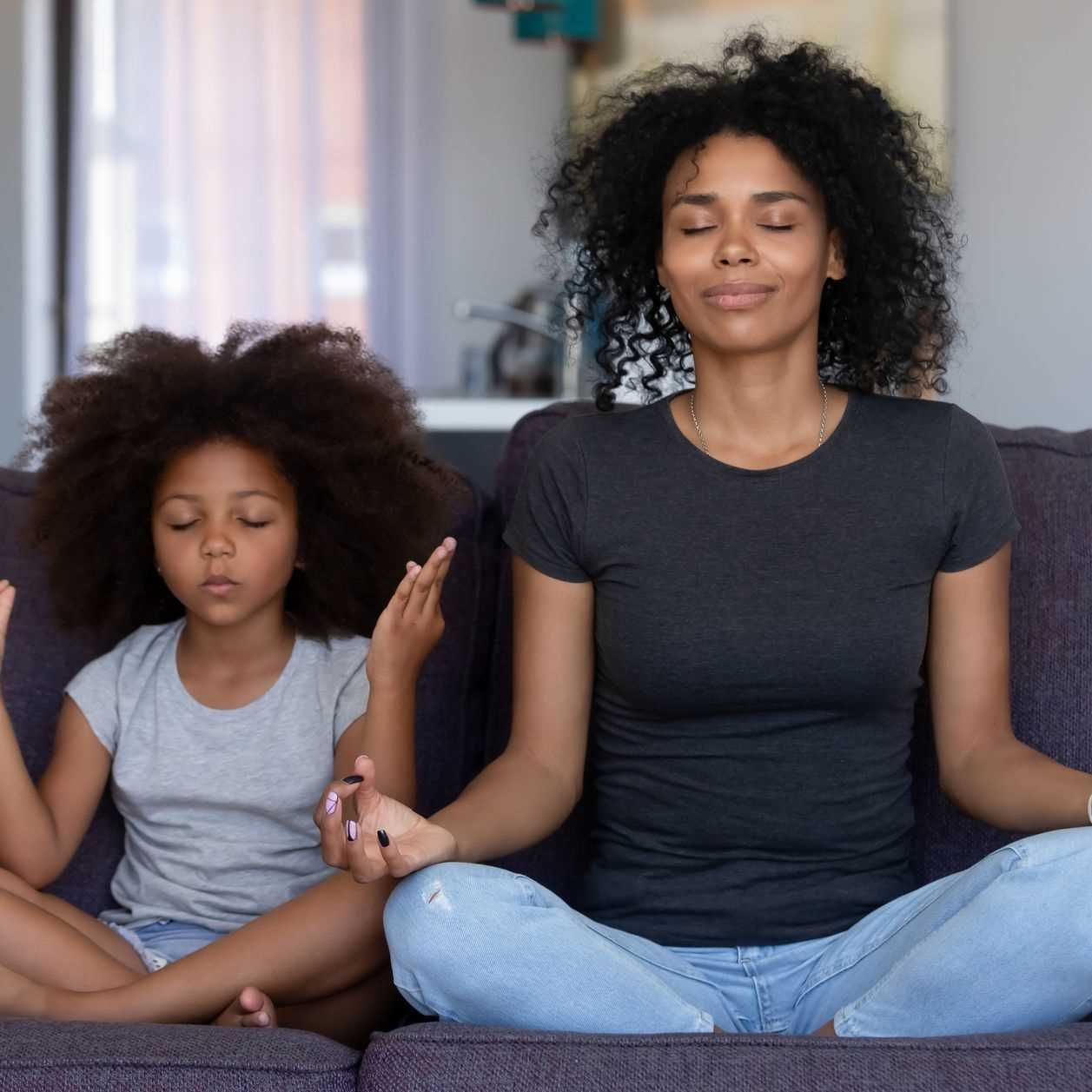Periods of stress or the desire to teach your child to disconnect to better refocus: there are plenty of reasons to meditate with your little one! Our advice for a successful meditation every time.
Do you find your child particularly anxious at the moment? Or maybe he always had trouble concentrating, whether in the classroom or at home activities? It's time to put yourself in meditation! This practice, so popular with adults, has adapted its techniques to also appeal to children and introduce them to this. mindfulness so much sought after, this state in which we manage to be fully in the present moment, without distraction, and to be able to pause to better observe what is happening around us.
From what age can children meditate?
Most meditation exercises for children are rather intended over 4 years, with short sessions of around 5 minutes. Sessions of approximately 10 minutes longer can be offered to older children, between 7 and 12 years of age, for example.
But nothing prevents you from setting up quiet moments with smaller children, and invite them to take a close look at the work of ants in the grass, for example, or to contemplate the clouds in the sky, imagining the shapes they can take. Everything is good for showing your child surprising discoveries that are often overlooked.
Before starting the meditation session with your child
Choose the right time to meditate with your child, so that they want to start this new adventure with you. Before going to bed as a new evening ritual, before lunch, or in the morning to be sure you have a good day: it is you who know your child best and who will know when to offer him this little parenthesis to be the most receptive. Try to suggest a meditation session regularly enough, such as a date, so that he learns to taste it over the weeks.
Obviously never force it, It's not an obligation, just a moment to share together, then moments of relaxation that he can live alone if he prefers. In any case, accompany him for the first sessions, encouraging him and talking to him about what you may have felt during meditation.
Get comfortable in a quiet location of the house, where you are sure not to be disturbed, sitting on a chair or on a cushion on the floor, or even lying on a bed. Prefer a comfortable fit which does not bother you especially in the belly, for a completely free breathing, and go!
Some meditation exercises for children
- Breathing meditation
The majority of meditation exercises focus on breathing, which allows us to get out of our minds and calm down with its regular rhythm.
Find a comfortable position, close your eyes if necessary, and ask your child to imagine that his belly is a balloon, that it can inflate and deflate at will, more or less slowly.
You can also place a hand on your stomach and follow the movements caused by breathing.
- Body-focused meditation
Always in a comfortable position, focus on a part of the body, such as your left foot. Hold it tight for two breaths then release it. Wait for a few breaths then do the same with the right foot, calves, thighs, etc., going up towards the upper body. At the end, tighten all the muscles of the body together, then relax everything and enjoy a feeling of general relaxation.
- Meditation in music
Choose a piece of classical music, if possible short enough for the little ones, make yourself comfortable, close your eyes, and focus on your breathing while listening to the different instruments. Your child may want to talk during the session, so try refocusing on their breathing and music.
Tools to meditate with your child
It can be useful to be helped in meditation with your child, especially to be able to suggest new exercises that will pique his interest.
We can only advise you on the best-selling book Quiet and attentive like a frog, for children from 4 to 12 years old, and its version for teens Breathe: meditation for teens and their parents, both offering many guided meditation sessions on CD which focus on breathing, the body, the emotions one can feel, but also visualization. If you want to try it out before you buy it, there are free sessions available on YouTube.
Other books like Meditation for children with Yupsi the little dragon by Marie-Christine Champeaux-Cunin and Dominique Butet, as well as A quiet and wise heart by Susan Kaiser Greenland, offer sessions adapted to children to teach them to concentrate and to feel happier, quite simply!
You can also turn to proven meditation apps like Little Bamboo, Mind and Headspace, where you will find programs designed for the youngest. If they are all paid, free sessions or trials will still be offered.
Used by many French teachers, the Zamizen program and its emblematic cat Voltaire is also accessible for parents, and even free during this confinement period. You will be offered a step-by-step method of listening to a story, a detailed memo to guide discussions with your child, a song and then a guided meditation. To test !
